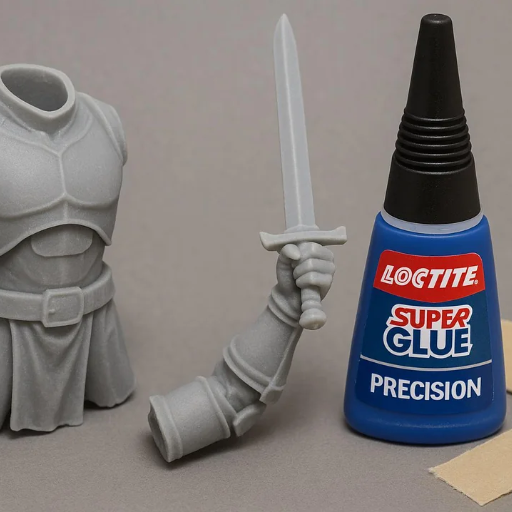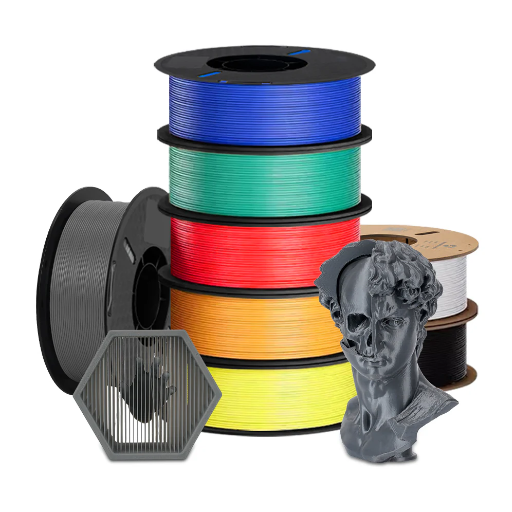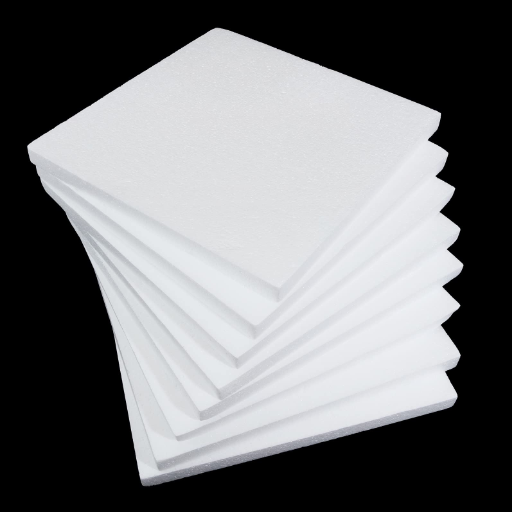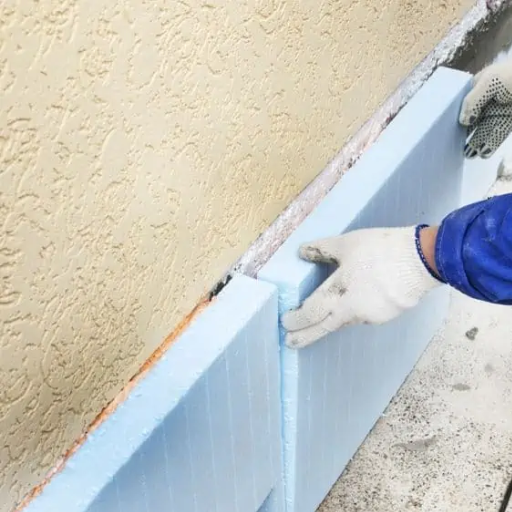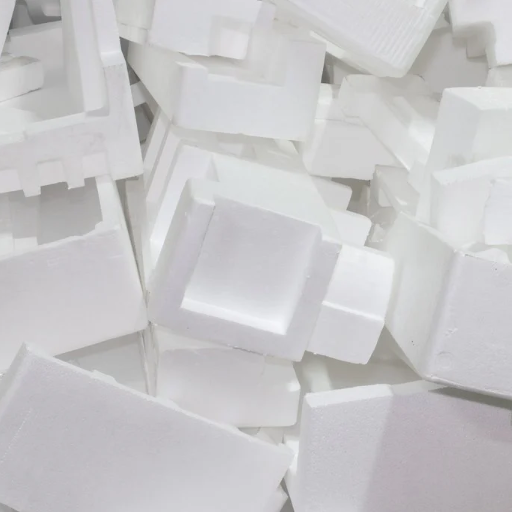When it comes to construction and repair projects, achieving a strong, reliable bond is non-negotiable. Concrete, being one of the most robust and widely used materials, often relies on high-performance construction adhesives to ensure durability and precision. This guide dives deep into the world of glue for concrete, providing an essential overview of how construction adhesive works, its applications, and tips for selecting the right product for your specific needs.
From understanding the technical properties of these adhesives to exploring real-world use cases, this article offers a comprehensive roadmap for both DIY enthusiasts and construction professionals. Whether you’re looking to repair cracks, secure tiles, or bond heavy-duty materials, this ultimate guide will empower you with the knowledge to maximize the efficiency and dependability of your projects.
What is the best glue for concrete surfaces?

The best glue for concrete surfaces largely depends on the specific application and environmental conditions. Epoxy-based adhesives are widely regarded as one of the top choices for their excellent bonding strength, durability, and resistance to extreme temperatures and chemicals. For general fixes and smaller-scale projects, polyurethane adhesives are highly effective due to their flexibility and ease of use. Construction adhesives designed explicitly for concrete, such as those labeled heavy-duty or industrial strength, are also reliable options for creating long-lasting bonds. Be sure to consider factors like the type of material being bonded to the concrete, weather exposure, and the load-bearing requirements when selecting the ideal adhesive.
Understanding different types of concrete adhesives
Concrete adhesives can be categorized into three main types, each suited for specific applications:
Epoxy-Based Adhesives
Epoxy adhesives provide exceptional strength and durability, making them ideal for high-performance applications such as industrial settings or heavy construction. They are highly resistant to chemicals, water, and extreme temperatures, ensuring a reliable bond even under harsh conditions. However, they require precise mixing and curing time.
Polyurethane Adhesives
Known for their flexibility and versatility, polyurethane adhesives are excellent for bonding materials that may expand or contract due to temperature changes. They are easy to apply and cure quickly, making them perfect for DIY projects, outdoor repairs, or applications needing a weather-resistant bond.
Acrylic Adhesives and Cementitious Grout
Acrylic-based adhesives are favored for their quick curing time and strong bonding capability. They are often used in applications that require speed and efficiency, such as tiling or lightweight repairs. Cementitious grout, on the other hand, is commonly found in structural repairs where it forms a durable bond between old and new concrete surfaces.
When selecting the right adhesive, factors like project requirements, material compatibility, load demands, and environmental exposure should guide your decision to ensure a successful and lasting bond.
Comparing epoxy, polyurethane, and acrylic-based adhesives
When evaluating epoxy, polyurethane, and acrylic-based adhesives, each offers unique strengths depending on the application:
1. Epoxy Adhesives:
Epoxy adhesives are renowned for their exceptional strength, chemical resistance, and versatility. They excel in industrial and structural applications, bonding various materials like metals, wood, concrete, and plastics. Epoxy provides outstanding durability under high stress and is suitable for harsh environmental conditions, such as exposures to water, chemicals, or extreme temperatures. However, they tend to have longer curing times and may require careful surface preparation for optimal results.
2. Polyurethane Adhesives:
Known for their flexibility and impact resistance, polyurethane adhesives are highly effective in bonding materials subjected to vibration or thermal expansion, making them ideal for automotive, construction, and woodworking uses. They offer good durability against moisture and environmental wear, but their bond strength is generally lower than that of epoxies. Additionally, polyurethanes often cure faster, making them practical for time-sensitive projects.
3. Acrylic-Based Adhesives:
Acrylic-based adhesives are valued for their fast curing times, even in less-than-ideal conditions. They adhere well to diverse substrates, including plastics, metals, and composites, while maintaining strong resistance to environmental factors like UV light and temperature changes. These properties make them a popular choice in signage, electronic assemblies, and DIY repairs. Nevertheless, their durability may not rival that of epoxies in high-stress applications.
Each adhesive type offers distinct advantages, and selecting the right one depends on factors like material compatibility, environmental exposure, curing time constraints, and mechanical demands of the project.
Factors to consider when choosing concrete glue
When selecting concrete glue, it’s essential to evaluate several critical factors to ensure optimal performance and durability:
Material Compatibility
Confirm that the adhesive is designed for use with concrete and any secondary materials involved in the bond, such as metal, wood, or plastic. Some adhesives may be better suited for porous surfaces, while others excel with non-porous connections.
Strength and Load Requirements
Assess the mechanical demands of your application. For heavy-duty or structural projects, opt for high-strength epoxy or polyurethane adhesives, which offer exceptional bonding capabilities even under pressure or weight.
Environmental Resistance
Consider the environmental conditions the bond will face, including moisture, temperature fluctuations, UV exposure, and chemicals. For outdoor or exposed projects, adhesives with weatherproof and waterproof properties are crucial to maintain long-lasting performance.
Curing Time
Depending on your project timeline, choose an adhesive with a curing time that aligns with your needs. Fast-setting adhesives are ideal for quick repairs, while slower curing options often provide a more durable and stable bond for larger projects.
Application Method
Evaluate the ease of application. Some adhesives are available in tubes for easy dispensing, while others may require mixing or specific tools. This can impact the efficiency of your workflow, particularly for large-scale applications or intricate repairs.
By carefully balancing these considerations, you can select a concrete adhesive tailored to your project, ensuring a secure, durable, and long-lasting bond.
How do I properly apply concrete adhesive?

Applying concrete adhesive correctly involves a few preparatory steps. Clean the surfaces so they are dry and free of dust, oil, or other particles. If necessary, lightly grit the edges of the surfaces to improve bond adhesion. Following directions for the specific type of adhesive to be used, prepare it according to the instructions given, whether that be through a dispensing tube or mixing. Apply the adhesive to one or both faces, taking care to cover all areas. After completely pressing the surfaces together, maintain the hold for the time suggested for the adhesive to set. Maintain the curing time to achieve the best results.
Preparing concrete surfaces for optimal adhesion
To ensure optimal adhesion on concrete surfaces, start by thoroughly cleaning the area. Remove dust, grease, oil, or any contaminants using a wire brush, detergent, or a pressure washer. Next, inspect the surface for cracks, chips, or uneven sections; patch and level these areas with appropriate repair materials. For glossy or smooth concrete, roughen the surface slightly using methods like sandblasting or grinding to improve the adhesive bond. After preparation, ensure the surface is completely dry and free from loose particles before applying the adhesive.
Step-by-step guide to applying concrete bonding adhesive
Choose the Right Adhesive
Start by selecting a concrete bonding adhesive suitable for your project. There are various types, including liquid, epoxy-based, and latex-based adhesives. Ensure the adhesive is designed for the specific application, whether bonding new concrete to old or repairing damaged concrete surfaces.
Mix the Adhesive
Some adhesives come ready-to-use, while others require mixing. Follow the manufacturer’s instructions precisely for mixing ratios and procedures to achieve the correct consistency and performance.
Apply the Adhesive
Use a brush, roller, or trowel to apply the adhesive evenly to the prepared surface. Cover every section to ensure a complete bond, but avoid pooling or an overly thick layer, as this can weaken the bond.
Allow for Tack Time
Most adhesives need a brief tack time before applying new concrete over them. Check the adhesive instructions for the recommended duration, as this can vary based on the product and environmental conditions.
Layer New Concrete
Once the adhesive reaches the recommended tackiness, apply the new concrete mix promptly. Work carefully to ensure full contact between the new material and the adhesive layer, preventing air pockets or gaps.
Cure and Finish
Allow the concrete to cure according to the manufacturer’s specifications. Proper curing ensures the bond’s strength and prevents cracking or detachment. Follow up with any required finishing, such as smoothing or texturing the surface.
By adhering to these systematic steps, you can achieve a durable, professional-quality bond that ensures your project’s structural integrity and longevity.
Common mistakes to avoid when using glue for concrete
Skipping Surface Preparation
Failing to clean and prepare the surface properly can lead to weak bonding. Ensure all dust, debris, grease, and moisture are removed before applying the adhesive. Poor preparation is one of the leading causes of failure in concrete bonding.
Using the Wrong Type of Adhesive
Not all adhesives are suitable for concrete. Using products not designed for high-strength or outdoor applications can result in subpar performance. Always select an adhesive specifically formulated for bonding concrete and compatible with your intended use.
Applying Insufficient Adhesive
Applying too little adhesive can create weak spots in the bond, compromising the structure’s integrity. Ensure you use the correct amount, evenly distributed across the surface. Refer to the manufacturer’s instructions for guidance on coverage.
Not Allowing Proper Curing Time
Rushing the drying or curing process can prevent the bond from reaching its full strength. Always adhere to the recommended curing time and conditions, as premature use can lead to detachment or failure.
Ignoring Temperature and Humidity Levels
Extreme temperatures or high humidity can negatively impact the adhesive’s performance. Avoid applying adhesive in conditions outside the manufacturer’s specified range, as this can weaken the bond considerably.
Can I use Gorilla Glue for concrete projects?

Gorilla Glue can be used for some concrete undertakings, although it is best suited to less demanding projects. Known for its cohesive bonding capabilities, a polyurethane adhesive, Gorilla Glue is good for binding light loads like cracked concrete pieces or fractures in the slab. However, it is not the best choice for heavy-duty structural repairs, extensive surface work, or regions that will experience significant weight-bearing pressure.
Gorilla Glue works best when the clean, dust-free or dry surfaces to which its bond are prepared in advance. Like any other glue, the manufacturer’s recommendations should be adhered to – in this case, moisture is required for the adhesive bond to set and cure satisfactorily. If the scope of work involves specialized load-bearing vertical shear walls, then other purpose designed concrete adhesives might be more appealing.
Exploring Gorilla Construction Adhesive for concrete applications
Gorilla Construction Adhesive is designed for strong, versatile bonding across various materials, including certain types of concrete. However, its effectiveness depends on factors such as surface preparation, load requirements, and environmental conditions.
Surface Preparation: Ensure that the concrete surface is clean, dry, and free of dust, grease, or debris. Proper preparation enhances the adhesive’s bonding capacity.
Applications: This adhesive is ideal for light to medium-duty bonds on concrete, such as attaching trim, small fixtures, or minor repairs. It is not recommended for load-bearing or structural applications.
Strength and Durability: Gorilla Construction Adhesive is water-resistant and can endure temperature fluctuations, making it reliable for both indoor and outdoor use. For projects requiring maximum strength or with significant stress points, consider using epoxy-based adhesives.
Curing Time: Full curing generally takes 24 hours, but this can vary based on humidity, temperature, and material thickness. Follow specific manufacturer guidelines for best results.
By selecting the right adhesive and prepping the surface properly, Gorilla Construction Adhesive can be a convenient solution for smaller, non-critical concrete applications. For heavy-duty or specialized needs, explore alternative adhesives designed specifically for structural concrete bonding.
Pros and cons of using Gorilla Glue on concrete
Pros:
Strong Bonding Power: Gorilla Glue provides a reliable and durable bond for small to medium-scale concrete repairs, particularly for non-structural applications.
Versatility: It adheres to a wide range of surfaces, including concrete, wood, metal, and plastic, making it suitable for multi-material projects.
Ease of Use: The application process is straightforward, requiring minimal tools, and it works well in various indoor and outdoor conditions.
Water Resistance: Gorilla Glue is highly resistant to water once cured, ensuring the bond remains intact in wet or humid environments.
Cons:
Not Suitable for Heavy Loads: This adhesive is not designed for structural or heavy-duty concrete bonding, limiting its application to less critical tasks.
Longer Curing Time: While it sets relatively quickly, full curing can take 24 hours or more, which may delay project timelines.
Surface Preparation Required: For the best results, surfaces must be clean, dry, and properly prepared, requiring additional effort and time.
Potential Expansion: Gorilla Glue expands as it cures, which might lead to unwanted overflow or require additional cleanup.
By considering these factors, you can evaluate whether Gorilla Glue is the right choice for your concrete bonding needs. For load-bearing or structural applications, specialized adhesives should be prioritized.
Alternative heavy-duty construction adhesives for concrete
When considering alternatives to Gorilla Glue for bonding concrete, several options offer specialized properties for heavy-duty and structural applications. Here are three highly recommended alternatives:
Loctite PL Premium Construction Adhesive
Renowned for its durability and strength, Loctite PL Premium provides excellent adhesion to concrete, stone, and other materials. Its polyurethane-based formula creates a strong, long-lasting bond while being resistant to water, temperature changes, and aging. It’s ideal for both interior and exterior use and works well in structural applications.
Quikrete Advanced Polymer Construction Adhesive
This adhesive is specifically designed for concrete and masonry projects. Its solvent-free, flexible formula is weather-resistant and suitable for outdoor applications. It cures quickly and can be used on vertical or overhead surfaces, making it a reliable choice for demanding construction projects.
SikaFlex Construction Sealant
SikaFlex is a high-performance adhesive sealant widely used in professional construction. Its polyurethane-based formula offers excellent adhesion, flexibility, and weather resistance. It works effectively in structural bonding, crack repair, and sealing joints in concrete and masonry surfaces.
Each option brings unique benefits, and your choice will depend on the specific requirements of your project, such as curing time, environmental resistance, and application type. Evaluate these adhesives to ensure optimal performance for your concrete bonding needs.
What’s the difference between concrete adhesive and epoxy?

Concrete adhesive and epoxy differ in their composition, application, and performance. Concrete adhesive is a polymer-based material designed to bond fresh concrete to an existing surface or repair small cracks. It is easy to use, cost-effective, and ideal for non-structural applications. Epoxy, on the other hand, is a two-part resin system known for its exceptional strength, durability, and chemical resistance. It is often used in structural bonding, heavy-duty repairs, and areas exposed to harsh environments. Choosing between the two depends on the specific needs of your project, such as the level of strength required and environmental conditions.
Understanding the composition of concrete adhesives vs. epoxy
Concrete adhesives primarily consist of polymers, such as polyvinyl acetate or acrylic, designed to create flexible yet sturdy bonds. These adhesives often integrate additives to enhance performance, such as improving water resistance or adhesion to rough surfaces. Their simple, single-component formula makes application straightforward and cost-effective for smaller, non-structural tasks.
Epoxy, in contrast, is a two-part system consisting of a resin and a hardener, which chemically react upon mixing to form an exceptionally robust and durable bond. The curing process of epoxy results in a rigid, high-strength adhesive with excellent chemical and temperature resistance. This composition makes epoxy ideal for structural applications, heavy-duty repairs, and environments exposed to stress, moisture, or chemical exposure.
The choice between concrete adhesives and epoxy boils down to the nature of the project. For quick, lower-strength repairs requiring flexibility, concrete adhesives are perfect. For critical, long-lasting structural applications, epoxy provides superior reliability and strength.
When to use concrete epoxy instead of regular adhesive
Concrete epoxy should be used when a project demands exceptional strength, durability, and resistance to environmental factors. It is ideal for heavy-duty structural repairs, anchoring bolts or rebar into concrete, and filling cracks that experience high stress or load. Unlike regular adhesives, epoxy is highly resistant to moisture, chemicals, and temperature fluctuations, making it suitable for industrial applications, outdoor settings, or areas exposed to harsh conditions. For projects requiring long-term reliability and precision, such as repairing foundations, securing structural components, or restoring damaged concrete, concrete epoxy is the superior choice over regular adhesive.
Comparing bond strength and durability of adhesive vs. epoxy
When comparing the bond strength and durability of adhesives versus epoxy, epoxy consistently outperforms regular adhesives. Epoxy adhesives are formulated with advanced chemical properties that enable exceptionally strong bonds, often with tensile and compressive strengths exceeding that of many traditional adhesives. Regular adhesives, while effective for lighter applications, lack the same level of resilience, particularly when subjected to prolonged stress, heavy loads, or environmental factors such as extreme temperatures and moisture.
Durability is another key distinction. Epoxy retains its structural integrity even in challenging conditions, making it ideal for industrial, structural, and outdoor applications. Standard adhesives, by contrast, are more susceptible to degradation over time, especially when exposed to fluctuating environmental conditions. This disparity highlights why epoxy is the preferred choice for demanding projects requiring reliable, long-term performance. Whether reinforcing structural components or repairing weight-bearing surfaces, epoxy provides a superior solution by combining unmatched strength and resistance.
How do I bond different materials to concrete?
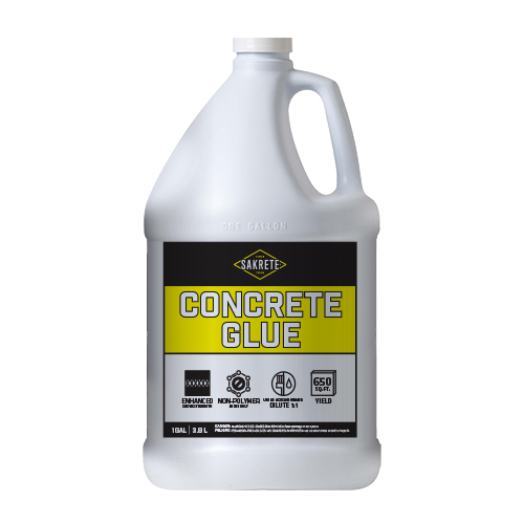
To bond different materials to concrete, selecting the right adhesive is essential. Epoxy adhesives are a popular choice due to their high strength and excellent bonding capability with various surfaces, including metal, wood, and plastic. First, ensure the concrete surface is clean, dry, and free from dust or grease, as this can affect adhesion. Depending on the material you are bonding, roughening the surface might improve the bond. Apply the adhesive evenly, following the manufacturer’s instructions, and press the material firmly onto the concrete. Allow adequate curing time to achieve a durable bond.
Gluing wood to concrete: Best practices and adhesives
When gluing wood to concrete, preparation is key to ensure a solid and lasting bond. Start by cleaning and drying the concrete surface thoroughly to remove dirt, grease, or debris. Sanding the wood lightly can also help to create better adhesion. Choose the appropriate adhesive based on the project – construction adhesives, such as polyurethane-based options, are highly effective for this application due to their strength and durability.
Apply the adhesive evenly to one surface using a caulk gun or trowel, depending on its consistency. Press the wood firmly against the concrete and use clamps or weights to hold it in place. Allow the bond to cure for the full time recommended by the manufacturer, which is often at least 24 to 48 hours. For heavy-duty applications or challenging environmental conditions, opting for an adhesive specifically rated for outdoor or high-moisture environments will ensure the best results.
Attaching metal to concrete: Recommended products and techniques
When attaching metal to concrete, selecting the right adhesive or fastener is critical for a secure and lasting bond. Epoxy-based adhesives, such as two-part epoxies, are highly recommended for their superior strength and resistance to environmental factors. To use, thoroughly clean both surfaces to remove dust and grease, then mix and apply the epoxy as directed. Clamp the metal to the concrete and allow curing for the specified time, typically 24 to 72 hours for full strength.
Alternatively, mechanical fasteners like anchor bolts or concrete screws are ideal for heavy-duty applications. Concrete screws, such as those made by Tapcon, provide durable and vibration-resistant connections. Drill pilot holes into the concrete using a masonry bit and drive the screws directly into place. For heavier loads, expansion anchors offer excellent grip; these anchors expand inside the concrete as the bolt is tightened, creating a firm hold.
Adhering plastic and ceramic to concrete surfaces
When adhering plastic or ceramic to concrete surfaces, choosing the right adhesive is critical to achieving a strong and lasting bond. For most applications, epoxy-based adhesives are highly effective, offering excellent strength and durability. Ensure the surface is clean, dry, and free of debris before applying the adhesive. Polyurethane adhesives are another versatile option, particularly for outdoor use, as they are resistant to water and temperature changes.
For lightweight applications, construction adhesives like Liquid Nails or Gorilla Heavy Duty Construction Adhesive can provide sufficient hold. These adhesives are easy to use and work well for bonding ceramics or plastics to concrete in smaller projects. Additionally, silicone-based adhesives can be useful for flexible bonds or areas exposed to moisture, such as bathrooms or outdoor spaces. Apply these products evenly, and allow proper curing time, typically following manufacturer recommendations, to ensure lasting adhesion.
What are the strongest adhesives for concrete repair?

When it comes to the strongest adhesives for concrete repair, epoxy adhesives are often the top choice. These two-part systems provide exceptional bonding strength, durability, and resistance to environmental factors such as water, heat, and chemicals. Products like Loctite Epoxy Metal/Concrete or PC-Concrete are specifically formulated for heavy-duty concrete repair, making them ideal for structural applications. For larger or more demanding projects, acrylic adhesives can also deliver excellent performance, offering rapid curing and strong bonds suitable for concrete and other construction materials.
Top-rated epoxy resins for concrete crack repair
Sikadur Crack Fix
Sikadur Crack Fix is a highly versatile, low-viscosity epoxy resin designed for repairing fine cracks in concrete. It penetrates deep into the cracks, creating a strong, watertight seal. Its exceptional adhesive strength makes it suitable for both structural and cosmetic repairs, meeting the needs of various residential and industrial applications.
PC-Concrete Two-Part Epoxy Adhesive Paste
This heavy-duty epoxy stands out for its adaptability and superior bonding properties. PC-Concrete is widely praised for its ability to repair cracks in concrete and other materials like metal and wood. Its non-sag formula is ideal for vertical and overhead applications, ensuring maximum durability and resistance to environmental stressors.
Rust-Oleum Concrete Patch and Repair
Rust-Oleum’s epoxy-based solution is a reliable choice for restoring damaged concrete. It offers excellent adhesion and cures to a hard, impact-resistant finish. This product is particularly well-suited for filling and sealing larger cracks or holes, providing a smooth surface that can be painted or coated for a seamless look.
When using any of these top-rated epoxy products, proper surface preparation and adherence to manufacturer instructions are crucial to achieving optimal results.
Max strength construction adhesives for heavy-duty concrete bonding
When it comes to heavy-duty concrete bonding, selecting the right construction adhesive ensures long-lasting and reliable results. Here are some options known for their superior performance:
Loctite PL Premium Construction Adhesive
This polyurethane-based adhesive is renowned for its exceptional bonding strength. It creates a durable, weather-resistant seal that works on concrete, stone, wood, and metal surfaces. Its formula is VOC-compliant and ideal for both indoor and outdoor projects, ensuring versatility across various applications.
Gorilla Heavy-Duty Construction Adhesive
Gorilla’s heavy-duty adhesive offers a fast-grab formula, making it user-friendly for vertical or tricky surfaces. Its waterproof and temperature-resistant properties make it perfect for demanding environments. This adhesive bonds to rough or uneven surfaces, making it highly reliable for concrete and masonry jobs.
Quikrete Advanced Polymer Construction Adhesive
A standout choice for construction projects requiring top-notch durability, Quikrete’s polymer adhesive delivers a strong, flexible bond. It’s designed to address the challenges of concrete bonding, including resistance to moisture, extreme temperatures, and structural stress, ensuring longevity and performance.
These adhesives are trusted for their ability to withstand environmental stressors and provide industrial-grade strength. For best results, carefully follow the manufacturer’s guidelines, ensure surfaces are clean and dry before application, and allow adequate curing time.
Instant grab adhesives for quick concrete fixes
Instant grab adhesives are specifically formulated to provide fast and secure bonding, making them ideal for quick concrete fixes. These adhesives eliminate the need for mechanical fasteners in certain applications, streamlining the construction process while maintaining high strength and durability.
When selecting an instant grab adhesive, prioritize options that work well with concrete and masonry, offering high resistance to moisture, vibration, and temperature fluctuations. Many advanced products provide flexibility to prevent cracking over time and ensure a lasting hold even in challenging conditions. Popular features include no-run consistency for vertical applications and compatibility with rough or uneven surfaces.
References
Frequently Asked Questions (FAQ)
Q: What is the best adhesive for concrete?
A: The best adhesive for concrete often depends on the type of project and materials involved. Epoxy adhesives and heavy-duty construction adhesives are commonly used due to their strong bonding capabilities and durability.
Q: How do you apply concrete adhesive?
A: To apply concrete adhesive, clean and prepare the surfaces first, then read the manufacturer’s instructions for specific guidelines. Typically, you’ll use a caulking gun or syringe for precise application, ensuring the concrete adhesive is applied evenly.
Q: Can epoxy glue be used to bond to concrete?
A: Yes, epoxy glue is specially formulated to bond to concrete effectively. It provides a strong, durable bond that can withstand heavy-duty applications, making it ideal for various concrete projects.
Q: How long does it take for construction adhesive to cure?
A: The time it takes for construction adhesive to cure can vary depending on the adhesive formula and environmental conditions. Generally, it can take anywhere from 24 to 48 hours for most adhesives to fully cure and provide a strong bond.
Q: What surfaces can construction adhesive sealant bond?
A: Construction adhesive sealant can bond a variety of surfaces, including concrete, wood, metal, and other building materials. It’s important to choose the right adhesive for the specific materials you are working with.
Q: Is there a strong adhesive for exterior walls?
A: Yes, heavy-duty construction adhesives are designed to bond exterior walls and withstand environmental conditions. These adhesives are ideal for outdoor projects due to their resistance to weather and temperature changes.
Q: What are the advantages of using a two-part epoxy adhesive?
A: A two-part epoxy adhesive provides a strong, durable bond and is excellent for filling cracks and gaps in concrete. It cures to a hard, solid state and offers superior strength compared to single-component adhesives.
Q: Can I use clear glue for concrete applications?
A: While clear glue is not typically used for heavy-duty concrete applications, there are clear adhesives formulated for specific uses. However, for most concrete projects, a strong adhesive like epoxy or construction adhesive is recommended.
Q: How do I ensure the strongest bond when using concrete glue?
A: To ensure the strongest bond, make sure the surfaces are clean, dry, and free from dust or debris. Follow the manufacturer’s instructions carefully, and keep the surfaces in place while the adhesive cures to achieve maximum bond strength.
















